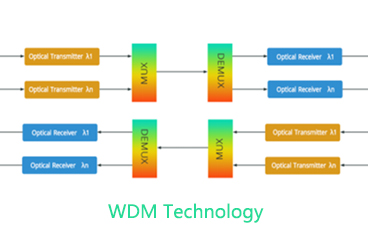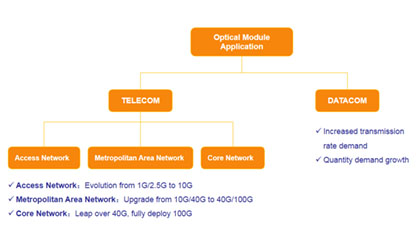With development of 5G technology, the 5G mobile and wireless networks has progressed at a rapid pace. The significant increase in base station density, along with demands on latency, bandwidth and network flexibility, have placed higher requirements on the 5G network architecture and associated transmission.5G bearer network can provide connections for 5G wireless access and core networks. Its network architecture and bandwidth have been changed greatly to adapt to larger bandwidth, lower latency and more connection services compared with 4G networks.
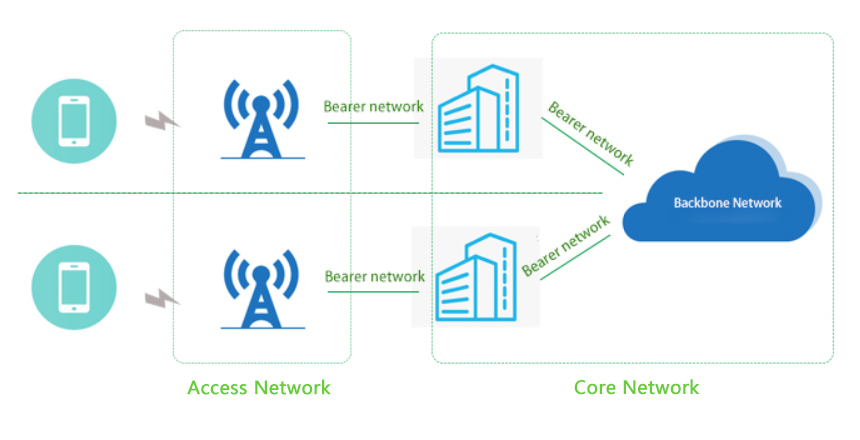
5G has moved part of the physical layer of the original BBU (baseband unit) in the 4G era to AAU (active antenna unit). Also, the interface has been changed from the original 100Gbit/s CPRI to 25Gbit/s. And the non-real-time functions of the BBU are moving up to the CU (centralized unit) to make preparations for the clouding network. In this way, the DU (distribution unit) is the only part of the BBU. In other words, the 5G access network has evolved from the two-tier architecture of the BBU and RRU to the three-tier architecture of CU, DU, and AAU. This not only ensures high bandwidth and low latency of the network but also contributes to flexible scheduling, network protection, and management control.
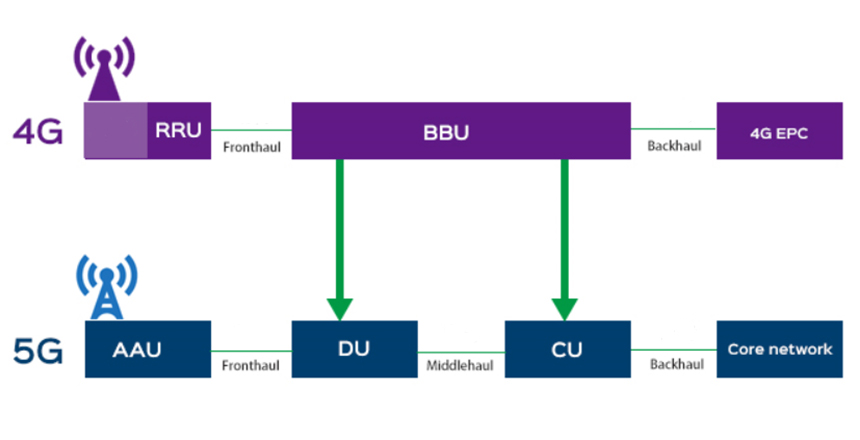
Considering the budgets of the network, 10G fiber optical modules might be applied for network deployment in the 5G front-haul transmission by some network service provider. Nevertheless, the industry prefers to use 25G modules due to that the network granularity is 25Gbps. That is to say, 25G and 100G fiber optic transceivers would be the best choices for 5G front-haul network.
In addition, 5G mid-haul and back-haul networks cover the access layer, aggregation layer, and core layer of the MAN (metropolitan area network), and the optical transceivers used in its MAN are similar to the transceivers used in existing transmission networks and data centers. Among them, the 25G/50G/100G grey light or colored light modules will be mainly applied for the metro access layer network, and the metro convergence and core layer network will mainly use 100G/200G 400G DWDM color optical modules. Sopto is the manufacturer for fiber optical transceivers from 1G to 100G with different transmitting distance.
The applications of 5G front-haul, mid-haul and back-haul transmission are basically different, thus the requirements for transceivers and transmission distances are also varied. There are 4 typical connection solutions for 5G front-haul, such as fiber direct connection, passive WDM, active WDM/OTN and SPN which are applicable for different sceneries. Considering the convenience and efficiency of network construction, the initial 5G front-haul connection is based on fiber direct connection. The 25G grey light transceivers will be the dominance of the direct connection in front-haul transmission. It can support dual-fiber and single-fiber bidirectional transmission to reach a transmission distance of 330m and 10km respectively.
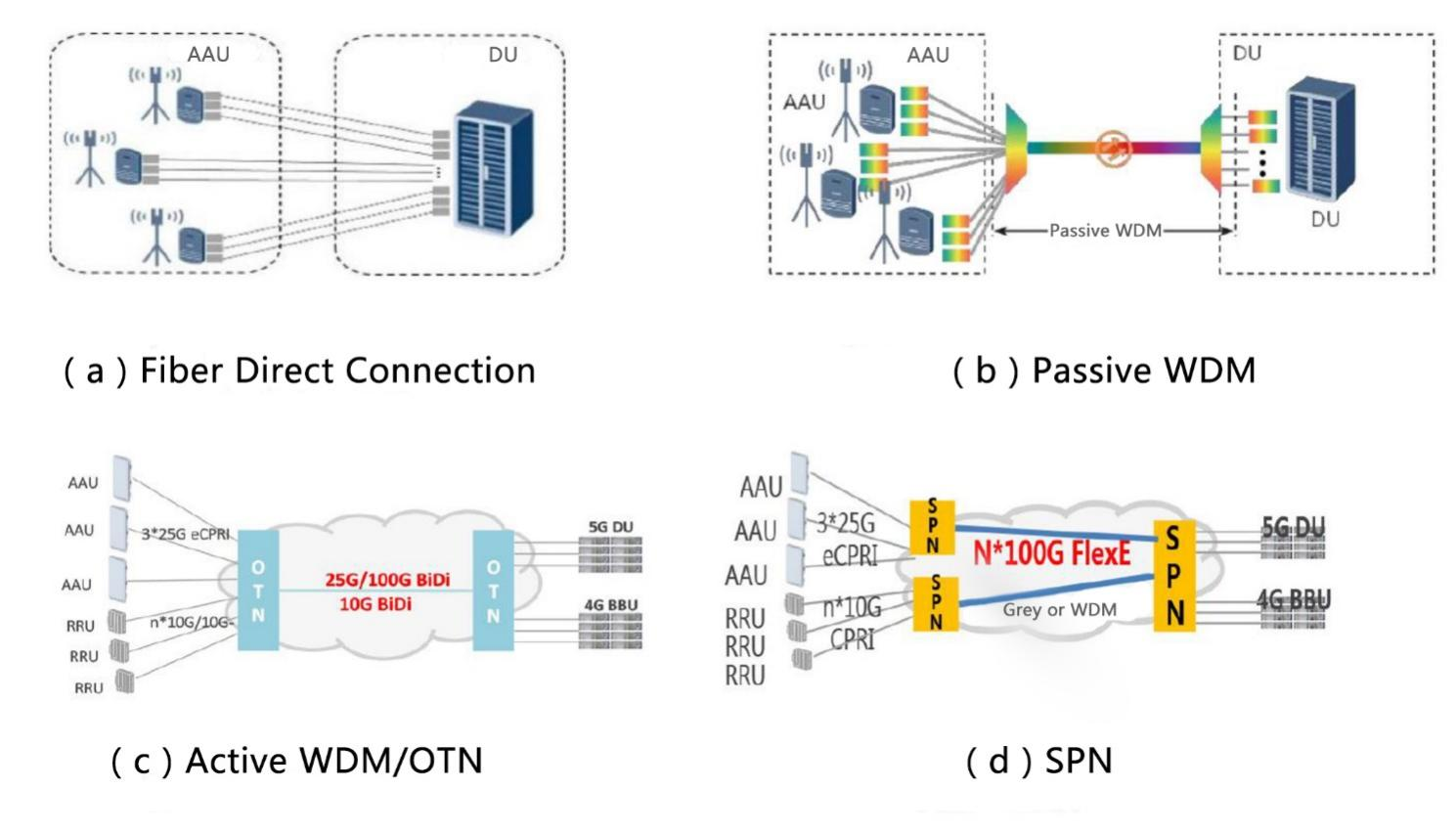
Passive WDM connection can multiplex several wavelengths and transmit them on a pair of or a single fiber to connect multiple AAUs to DUs for saving fiber cable and maintenance cost. Generally, the 10G or 25G colored light transceivers (WDM transceivers) are applied for this connection with a 10km and 20km transmission distance.
Active WDM/OTN/SPN connection needs to deploy OTN devices (such as WDM Mux/Demux, OADM, EDFA, OEO, etc.) between the AAU site and DU equipment room. It also utilizes WDM technology and provides multiple AAU to DU connections by using a pair of optical fiber or single fiber. Usually, the 10G/25G grey light optical modules with a short transmission distance are applied for connecting AAU/DU with WDM/OTN/SPN. The connections between WDM/OTN/SPN network devices can be achieved by 10G/25G/50G/100G dual-fiber or single-fiber bidirectional fiber optic transceivers.
Data Rate(Gbps) | Transmission distance | Interface | Wavelength | Fiber | |
9.95~11.3 | 220m,10km,20km, 40km,60km,80km, 100km,120km | Duplex LC | 850nm,1310nm,1550nm | Single-mode, Multi-mode | |
9.95~11.3 | 10km,20km, 40km,60km,80km | Simplex LC/SC | 1270nm TX/1330nm RX; 1330nm TX/1270nm RX; 1490nm TX/1570nm RX; 1570nm TX/1490nm RX; | Single-mode | |
9.95~11.3 | 10km,20km, 40km,80km | Duplex LC | 1270nm~1330nm; 1470nm~1610nm; | Single-mode | |
9.95~11.3 | 40km,80km,100km | Duplex LC | Single-mode | ||
25 | 70m/OM3; 100m/OM4; 10km | Duplex LC; MPO/MTP | 1330nmTx/1270nmRx; 1270nmTx/1330nmRx; 850nm;1310nm | Multi-mode | |
103,112 | 100m/OM4; 2km;10km | DuplexLC; MPO/MTP | 1310nm | Single-mode, Multi-mode |
Tags : 5G, 5G network, fiber module,WDM,fiber optic transceiver
— END —







